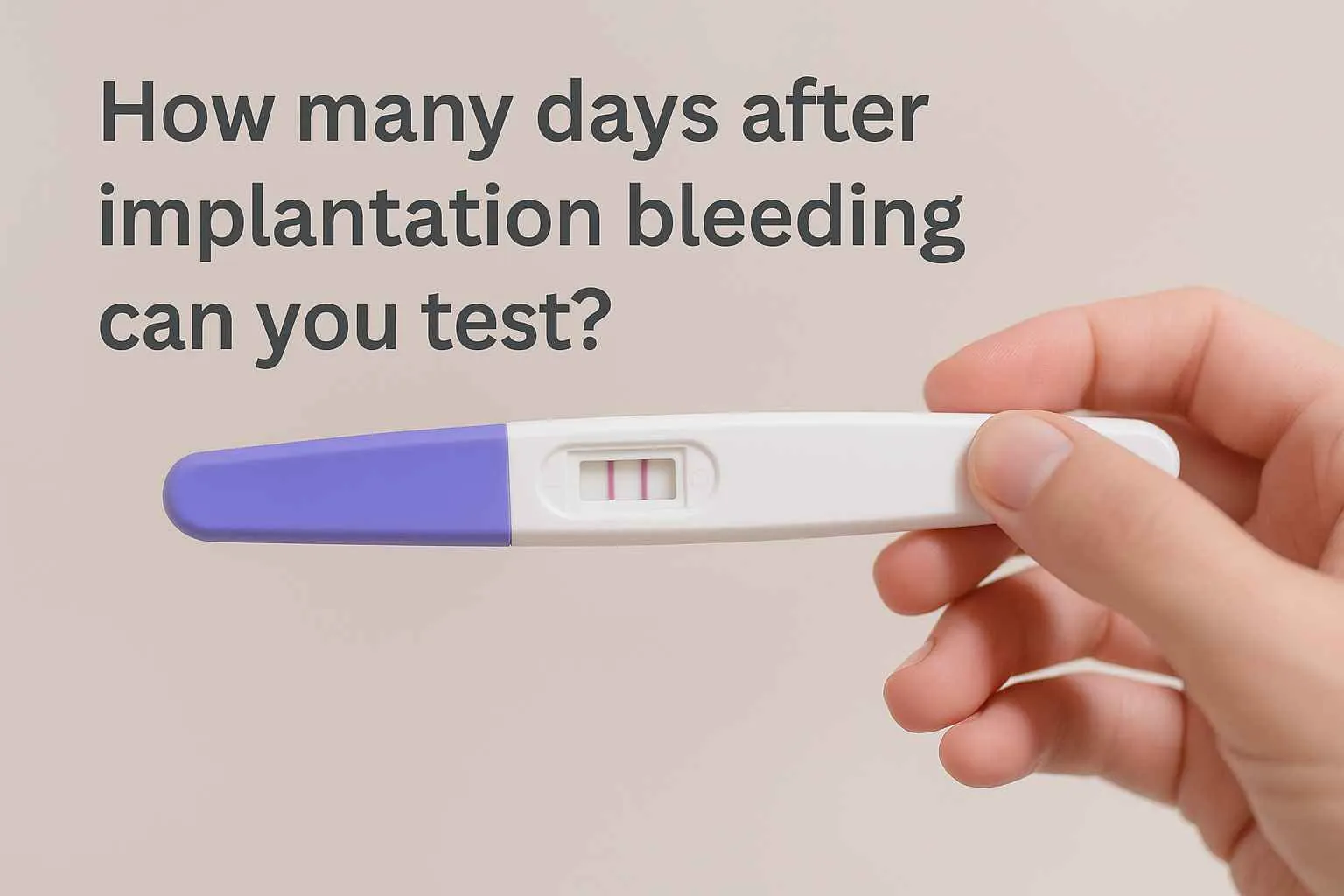Ureaplasma is a little-known but surprisingly common bacterial infection that often goes unnoticed—until it causes problems. In most women, it may pose no symptoms, making it easier to ignore. But when it persists and exacerbates, it can lead to complications, especially associated with the reproductive system.
This article walks you through the symptoms of Ureaplasma in females, causes, risks, and treatment options, so you can recognize early symptoms and take timely action.
What Is Ureaplasma?
Ureaplasma is a type of bacteria that naturally lives in the genital and urinary tracts. It’s considered part of the normal flora, meaning it usually doesn't cause harm.
However, under certain conditions, like a weakened immune system, pregnancy, or unprotected sex, it can overgrow and lead to infection.
How It Spreads
Sexual transmission (vaginal, oral, or anal)
Mother-to-baby during childbirth
Contaminated objects like unclean sex toys
Fact: Up to 80% of women may have Ureaplasma without any symptoms.
7 Common Symptoms of Ureaplasma in Females
While it can stay silent, an active infection can trigger the following symptoms:
1. Unusual Vaginal Discharge
By causing inflammation and disrupting the natural vaginal flora, ureaplasma can cause vaginal discharge that might look watery, yellowish in color with a foul odor.
2. Pain and Burning Sensation During Urination
Ureaplasma causes urethritis (inflammation of the urethra), which contributes to pain and a burning sensation while urinating.
3. Lower Abdominal Pain
Leads to inflammation and irritation in the urethra and cervix, which, in turn, causes mild to moderate pain in the lower abdominal region.
4. Pain During Sexual Intercourse
Causes inflammation in the urethra and also contributes to bacterial vaginosis (imbalance of vaginal bacteria), which leads to pain during sexual activity.
5. Frequent Urination
The inflammation and irritation in the urethra and bladder can trigger the bladder to shrink quickly and frequently than normal, contributing to frequent urges to pee, often in small amounts.
6. Vaginal Itching or Irritation (less common)
The overgrowth of ureaplasma can disrup the natural balance of vaginal flora, which leads to itching or irritation in the vagina. However, this symptom is less common.
7. Irregular Periods
Causes inflammation in the reproductive tract and also contributes to or worsens infections such as pelvic inflammatory disease and bacterial vaginosis. This can disrupt the menstrual cycles.
Can Women Have Ureaplasma Without Symptoms?
Yes, women can have Ureaplasma in their genital or urinary tract without any visible symptoms. These bacteria remain asymptomatic (showing no symptoms) because of:
Normal Flora: Ureaplasma is a part of the natural flora (bacterial population) of the body, living in the urinary and genital tracts.
Immune System Control: The healthy immune system keeps these bacteria in balance and also prevents them from growing in number and causing infections.
Self-seeking Nature: When the immune system becomes weak, Ureaplasma can overgrow and cause several symptoms.
Can Ureaplasma Be Mistaken for Other Infections?
Yes, Ureaplasma symptoms can be mistaken for other sexually transmitted infections (STIs) like chlamydia and gonorrhea or infections, such as urinary tract infections (UTIs). Why? Here are the reasons:
Shares similar symptoms: Ureaplasma cause symptoms such as pelvic pain, frequent urination, unusual vaginal discharge, and painful urination which are also common in gonorrhea, chlamydia, and UTIs.
Appears as an underlying cause: Sometimes, Ureaplasma can be the cause of vaginitis (inflammation in vagina) which share the same symptoms.
The best advice is to get tested properly if women experience any symptoms or have concerns about their sexual health.
How Long Does Ureaplasma Last Undetected?
The potential duration can be months and even years, without experiencing any visible symptoms, as the body's defence system keeps Ureaplasma under control. However, if the immune system becomes weak or vaginal flora get disrupted, it can lead to infections with noticeable symptoms.
In some cases, Ureaplasma also goes unnoticed for a longer period, as it is misdiagnosed as other infections like STIs or UTIs due to similar symptoms. If you have doubts or concerns, consult a doctor for testing.
Possible Complications if Left Untreated
The risks of untreated Ureaplasma may include:
Reproductive Health
Pelvic inflammatory disease (bacterial infection in the uterus, ovaries, and fallopian tubes)
Bacterial Vaginosis (infection causing imbalance of vaginal bacteria)
Cervicitis (inflammation of the cervix)
Infertility
Pregnancy Risks
Miscarriage
Preterm labor
Stillbirth
Premature rupture of membranes, a study reports that.
Chorioamnionitis (infection of the amniotic fluid and placenta)
Neonatal Issues:
Low Birth Weight
Respiratory infections, like pneumonia, are particularly common in premature infants
Brain inflammation in newborns
How Does Ureaplasma Impact Fertility?
Ureaplasma can lead to several reproductive complications, which can affect fertility. How? Let's break it down:
Inflammation: May cause inflammation of the reproductive organs such as the ovaries, fallopian tubes, and uterus, interrupting the conception process.
Pelvic Inflammatory Disease (PID): Leads to PID, a bacterial infection that damages fallopian tubes and uterus, preventing fertilization.
Implantation Failure: Ureaplasma inflammation might contribute to implantation failure, which prevents the embryo from adhering to the uterine lining.
Increased Preterm Birth Risk: If pregnancy happens, Ureaplasma can increase the chances of preterm birth, which can complicate the gestation period.
By understanding the impact of Ureaplasma on fertility:
Go for timely diagnostic tests.
Consider preventive measures.
Seek appropriate infection treatment
In case you face any challenges in conceiving, see a doctor for proper fertility treatment.
When Should You See a Doctor?
Seek medical attention if:
You notice any of the symptoms listed above
You’ve had unprotected sex with multiple partners
You’re planning to conceive or are pregnant
You’ve been diagnosed with a UTI but symptoms persist
Testing includes:
Urine sample
Swab tests
PCR testing
Treatment Options for Ureaplasma
The first-line treatment is a course of antibiotics, which is prescribed based on your condition and medical history. The antibiotics provided include:
Antobiotic | Dosage |
|---|---|
Doxycycline | 100 mg twice a day for at least 7 days |
Azithromycin | 1 g once a day |
Tetracycline | Dosage varies |
Clarithromycin | Dosage varies |
If you don’t respond well to these antibiotics, the healthcare professionals may prescribe another antibiotic, such as fluoroquinolones. Along with medication, the doctor also recommends the following important precautions to protect against the Ureaplasma infection:
Partner treatment, if one is diagnosed with the infection.
Practicing safe sex during the treatment period
Follow-up tests.
These measures can help protect against the Ureaplasma infection.
Can Ureaplasma infections Recur?
Yes, Ureaplasma infections can recur even after the antibiotic treatment. The factors that can increase the likelihood of recurrence of infection include:
Incomplete course of treatment
Having many sexual partners
Not using condoms
Having a weak immune system
Being pregnant
These factors allow the Ureaplasma to grow again and cause infection. So, the best advice is to consider the preventive measures until it resolves completely.
How to Prevent Ureaplasma Infections
To prevent the recurrence of Ureaplasma infection, follow these tips properly:
Practice safe sex hygiene by using condoms correctly and consistently using condoms, limiting sexual partners, cleaning contaminated sex toys, and getting STI screening regularly.
Consider partner testing if one partner is diagnosed with the infection, or especially if you have several sexual partners.
Avoid sexual intercourse until you complete your antibiotic treatment or get tested.
Use clean sex toys and also clean them after use.
Maintain vaginal pH balance by cleaning the vagina with unscented soap and water, wearing clean, breathable, cotton underwear, and changing dirty or sweaty clothes.
Boost your immune system by consuming a healthy diet, exercising regularly, getting adequate sleep, and reducing stress.
Attend regular health check-ups to detect potential infections early and to monitor your sexual health.
Final Thoughts
Ureaplasma may fly under the radar, but that doesn’t mean it’s harmless. If ignored, it can lead to fertility issues, pregnancy complications, and long-term health concerns, especially when the symptoms of ureaplasma in females go unnoticed or are mistaken for something less serious.
Stay proactive: If you experience symptoms—or just want to be sure—consult your gynecologist, complete any antibiotic treatment prescribed, and take preventive measures seriously.
अक्सर पूछे जाने वाले प्रश्नों
Can your body clear the Ureaplasma infection on its own?
Yes, the body can clear the infection itself in certain cases, where the immune system can fight against the infection without needing an antibiotic treatment.
Is Ureaplasma an STD?
Though Ureaplasma is generally categorized as a sexually transmitted disease (STD), it can spread through sexual contact.
Will 7 days of doxycycline cure Ureaplasma?
Yes, a 7-day doxycycline course is considered safe for the treatment of Ureaplasma infection. Some people experience improvements in symptoms within a few days of taking it.
Can Ureaplasma make you feel sick?
Though the chances are less, Ureaplasma can make you feel sick by causing symptoms such as lower abdominal pain, unusual discharge, and painful urination.
What is the long-term effect of Ureaplasma?
By causing inflammation and complications in the reproductive and urinary tracts, chronic Ureaplasma leads to fertility issues.
लेखक






